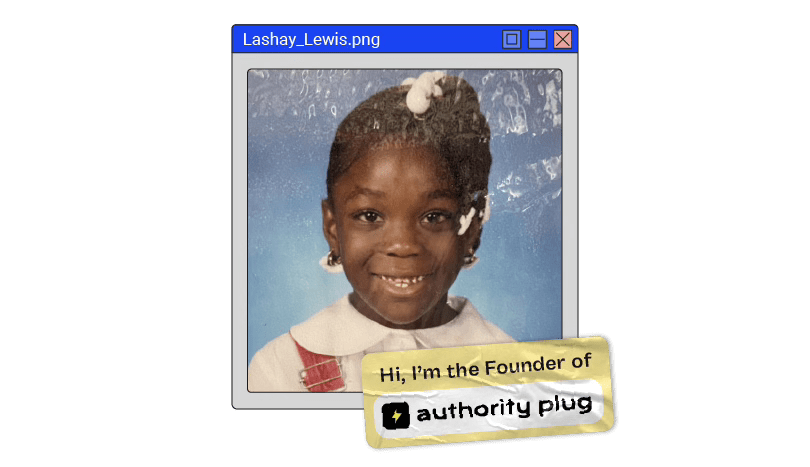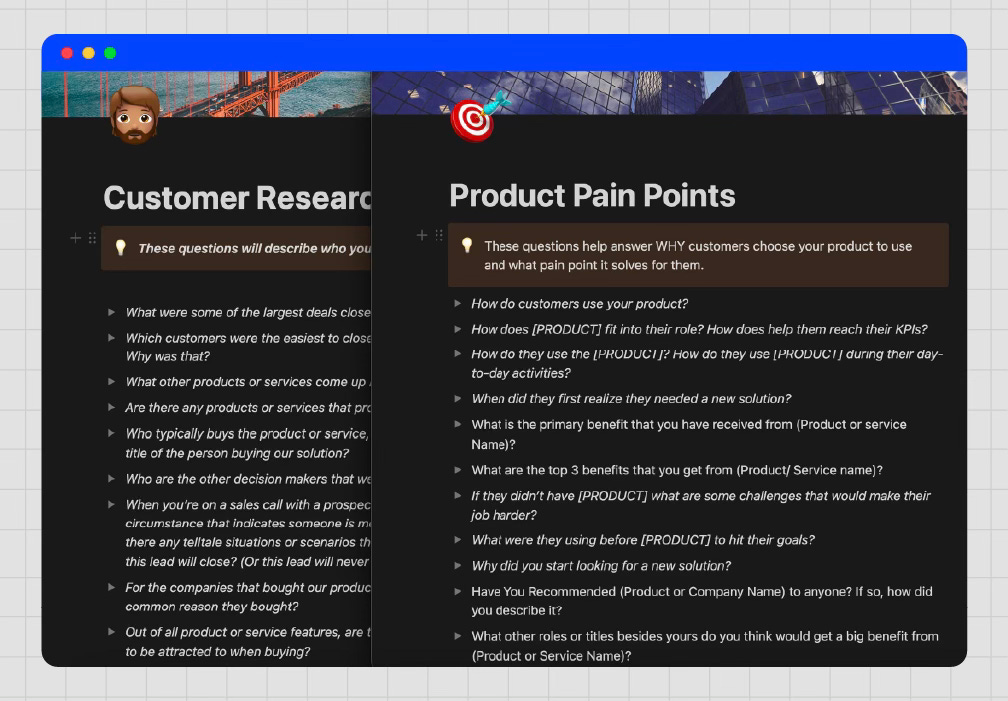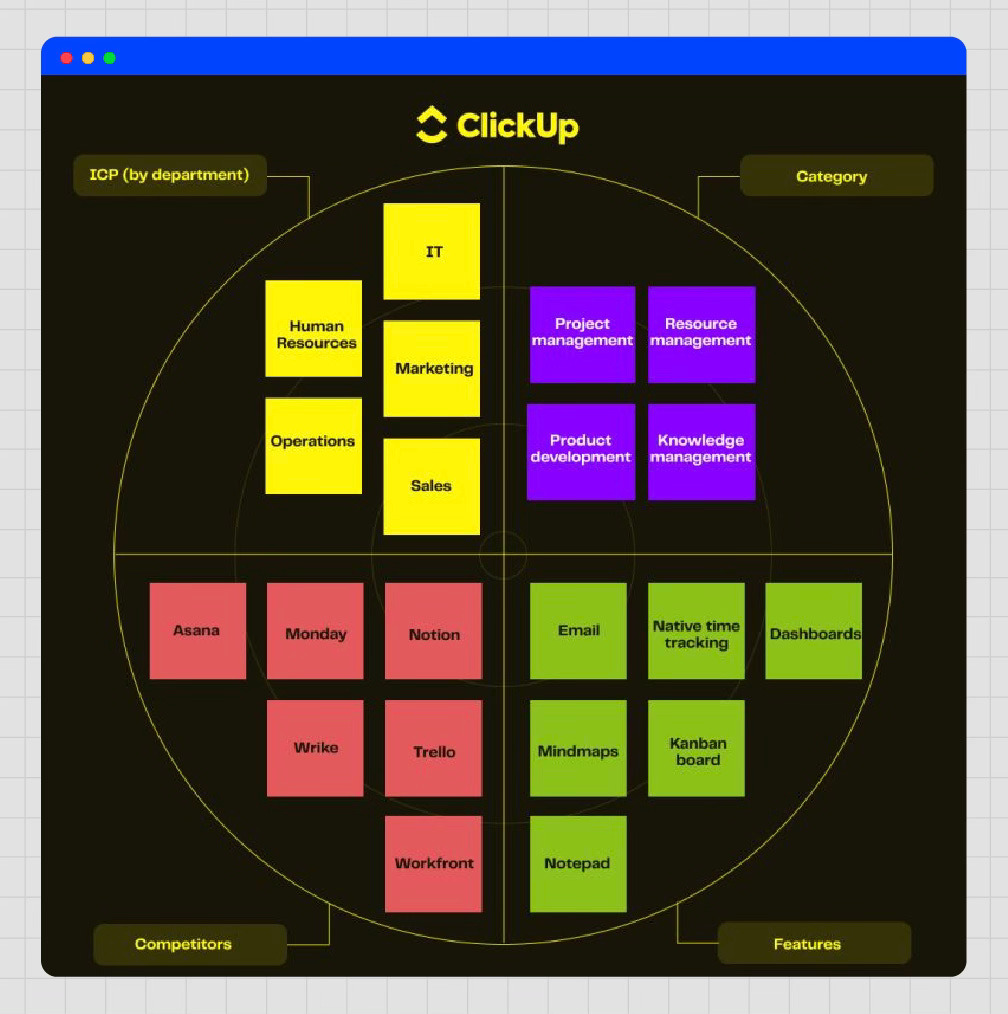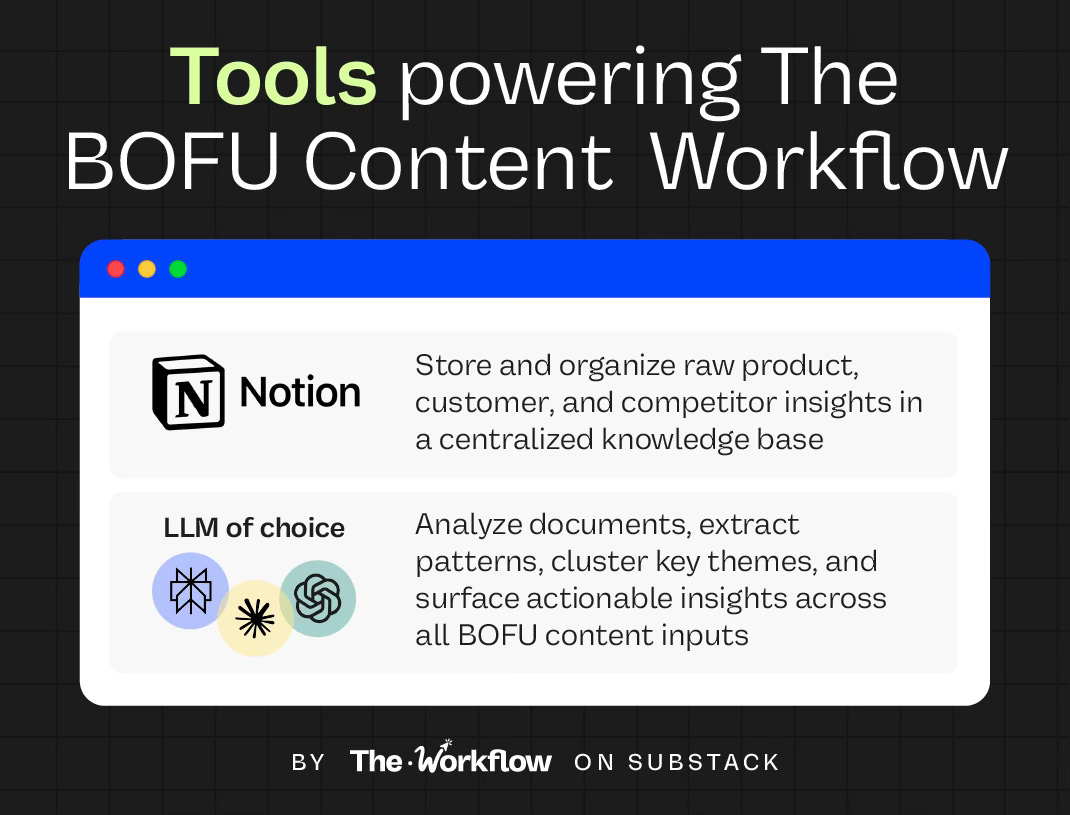The BOFU Workflow for killer product-led content
Forget “best tool” listicles and lazy comparison tables. Use this workflow to turn customer pains and product documentation into pipeline.
Welcome to issue #4 of The Workflow, the bi-weekly newsletter that shares AI and automation playbooks from people who actually do the work, not some bro yelling “AI replaced my whole team for free. Comment 💰 for the cheat code!!!”
Today’s guest is Lashay Lewis, aka the queen of bottom-of-funnel (BOFU) content. Two and a half years ago, she built the BOFU framework she wished she’d had back when she was grinding at a content agency.
That Notion-based dashboard morphed into Authority Plug, her specialized bottom-of-funnel content advisory for high-growth SaaS teams. As the AI boom hit, she saw an opportunity to scale client operations by building her own AI-powered platform to run her consultancy end-to-end.
Unfortunately, we can’t hand over her platform (off the market, sorry). But we can hand you this: a dead-simple starter kit for BOFU content that performs—even if you’re stuck with messy docs and one faithful LLM tab.
✅ What you’ll learn
How to build a BOFU content strategy with AI
How to gather information to create high-quality product-led content
How to run BOFU keyword research for Google + LLMs
How to create product-led content briefs that convert
🧨 What triggered The Workflow
Creating bottom-of-funnel content that actually converts is harder than most marketers want to admit. You’re writing for buyers who are already weighing options, not scrolling for generic advice. They want proof, facts, specifics, and reasons to choose you over the competition.
“This is how most SaaS companies approach BOFU content: skim a few product facts, research some keywords, write something ‘optimized’, hit publish… then wonder why it doesn’t convert.” Lashay told us.
She has a different approach: her frameworks combine product messaging, sales data, and customer intelligence. When AI entered the picture, she layered automation on top to minimize the busywork.
“At some point I realized I wasn’t losing deals to other consultants. I was losing them to content tools”, she admitted. The systemization that made her work so effective also blurred the line between consultancy and SaaS.
That tension pushed her to rethink the balance between bot and machine. The result is her new consultancy BOFU.ai, which combines the expertise of a senior content specialist and the scalability of AI.
👇🏼 At the core is the proprietary workflow we’re about to break down step by step.
The impact: Interview prep to first draft took half the time compared to our usual pace. Admin work dropped by 70%. And we finally stopped chasing transcripts and started shaping insights.
Want to replicate this workflow or tweak it for your own use case? Keep reading.
🛠️ How to build The Workflow
Lashay runs her consultancy on a custom platform. You don’t need that. What you do need are the four core steps behind her BOFU strategy.
🎁 Each step includes a signature prompt you can drop into your favorite LLM to guide research and content. In Step 4, you’ll also get a ready-to-use BOFU brief template, the same structure Lashay now runs inside her platform.
Step 1. Collect product and customer documentation
Gone are the days when adding ‘x’ amount of keywords in the article will get the job done. No SEO tool can replace the research needed to ensure your content resonates with your buyers.
BOFU content is only as strong as the inputs behind it. That means pulling business-relevant insights that actually show how customers think, talk, and buy.
Gather these key docs to build a strong product-led content strategy:
Sales decks, pitch materials, and product docs
Sales call recordings or CRM notes (Gong, Chorus, etc.)
FAQs, help center docs, and support logs
Any doc where differentiators and objections are hiding
AWESOME. But without a system to distill and organize this knowledge, it stays buried. Create a list of pains, benefits, language, and buying context that drive conversions.
Fundamental questions you should answer:
Who buys the product and why now?
What pain triggered their search for a new solution?
How do they describe your product’s value in their own words?
What competitors do they mention on calls?
What do they say your product helps them do better?
What tools were they using before, and why did they switch?
This is where great product-led content starts: not with keywords, but with context.
🤖 How to speed up things with AI
Skip the manual slog: let your favorite LLM surface the insights that matter. AI can help you:
Summarize large chunks of internal notes
Extract patterns across different customer interviews or pain points
Identify recurring objections or key differentiators
Cluster quotes around goals, pain points, or feature mentions
Highlight product benefits in the customer’s own language
💬 Grab the prompt to help you extract useful BOFU insights from your docs
Step 2. Map the competitive landscape
Once you’ve mapped the pains and the terminology your buyers use, it’s time to check what they are hearing from everyone else. Competitive research is the lifeblood of BOFU content.
“Every SaaS company says ‘Our product is the easiest to use.’ Cool. But if I read five competitors saying the exact same thing, it doesn’t help me make a decision. We need to give customers actual contrast.”
To do that, you need to articulate value propositions, key features, and capabilities clearly.
Here are the sources to analyze to run SaaS competitive research:
Competitor websites, especially product pages, case studies, and comparison pages
Review sites (G2, Capterra, TrustRadius)
Customer tickets, reviews, and comments about competitors on sales calls
🤖 How to speed up things with AI
AI can help you research competitors, compare your product to theirs, and identify competitive whitespace for your product and brand strategy. Lashay recommends using Perplexity for discovery and ChatGPT/Claude for analysis.
💬 Grab the prompts to profile your competitive landscape and to build a comparative matrix
3. Run BOFU keyword research that goes deep
This isn’t your average SEO agency’s “sprinkle in some modifiers and pray for traffic” keyword strategy. “Customer research drives keyword research.” Period.
Lashay uses the BOFU Radar. This quadrant-shaped framework will help you identify high-intent terms across four angles:
BOFU keyword research isn’t just blogs and Google anymore. This exercise uncovers opportunities both in search results and LLM responses for the queries that matter:
“Best X for Y” prompts (classic)
Pain-driven queries (”I’m a compliance manager looking for an onboarding tool…”)
Feature-level tool comparisons (”tools with built-in tax reporting”)
🤖 How to speed up things with AI
Once you’ve filled up the BOFU radar, let AI turn the insights you’ve collected into search terms and prompt-ready phrasing that actually convert.
💬 Grab the prompt to generate BOFU keywords and LLM-friendly queries
Step 4. Create conversion-worthy content briefs
Buyers can spot the difference between a “ChatGPT whipped this up in two minutes” article and a legit BOFU piece.
The first? A lifeless listicle.
The second? Structured, specific, and packed with facts, comparisons, and answers to real buyer objections.
This step is about turning your research into briefs that help writers transform raw intel into content that informs, differentiates, and actually converts.
What should a strong BOFU content brief include?
Clear answers to real buyer objections
Direct product comparisons backed by evidence
Stats, quotes, and CTAs that guide readers toward conversion
Content that matches high-intent, commercial queries
Use this BOFU content brief template to plug in your research and structure briefs that eliminate blank-page panic.
And yes, AI can help you jump from brief to draft fast, but we’ll save that for another issue. For now, nail the brief, amigos.
🤖 Tools powering the Workflow
Lashay runs BOFU.ai on a stitched-together stack hosted on Moonlit, combining research tools, automation, and documentation to keep her process running at scale. If this setup feels intimidating, that’s because it is. The good news is you don’t need a tech rocketship to launch your BOFU content strategy. Start by organizing your product, customer, and competitor insights in Notion. Then connect your favorite LLM directly through Notion MCP to analyze, extract, and cluster what matters.
🎢 Highs, lows and Workflow warnings
Lashay’s workflow delivers where off-the-shelf tools collapse. “There was no tool that could do what I needed. Asana couldn’t do it. Notion was the closest, but my clients didn’t even like editing in Notion. I literally had to build this.”
✅️What worked: her system saves both time and headcount. BOFU.ai consolidates the work of three specialized content and product roles into one repeatable engine. Saas companies plug directly into a process that ramps faster, aligns sales, product, marketing, and delivers pipeline.
❌What didn’t work: getting AI to nail nuance. “Finding that sweet spot between enough context and too much, where it starts to hallucinate… I haven’t nailed that for two years.” Automation powers speed, but clarity, structure, and style still demand a human brain. Or as Lashay puts it: “AI is the modifier, not the use case.”
✨ The Goldflow
Lashay’s biggest lesson from building her platform isn’t about prompts or integrating different tools. It’s about realizing she’s capable of way more than she gives herself credit for.
AI gave her a faster way to get thoughts out, systemize nuance, and operationalize what others would call “too messy to scale.” The brilliance is still hers. AI just helped her prove it.
Under the hood it took two years of trial, error, and plenty of frustration to get here. And it’s still not perfect; context, structure, and depth remain her biggest fights with AI. But the payoff is massive: a workflow that saves clients serious money, tears down team silos, and consistently produces BOFU content that converts.
Run it right and you’ll bottle nuance into a repeatable system. Run it sloppily and you’ll end up with yet another AI-written blog that reads like your FAQ page threw up.
See you at the next Workflow,
Sara & Diandra ✌🏼
🔨 Know someone trying to nail their product-led content?
🌯 It’s a major wrap
This was the fourth edition of The Workflow, a bi-weekly newsletter by Sara Lattanzio & Diandra Escobar, featuring one real workflow that moved the needle for someone even smarter than the system they built.
Can’t survive two weeks without us? Catch up on past Workflows and steal the playbooks you missed.
✍️ The Research Report Workflow to slash production time by 50%
🎯 The Lead Scoring Workflow that doubles free-to-paid conversions












Very informative. And timely as we catch up on Monday to fine tune next year's content plan. Thanks!